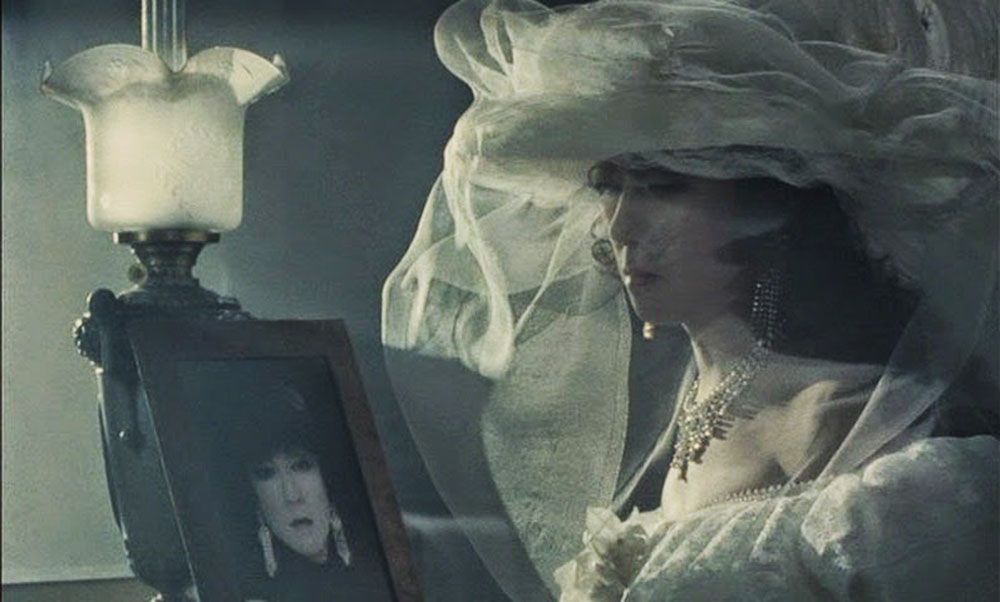International theater is a diverse world that includes different forms of drama like shakespeare and kabuki. Theater performances are worldwide forms of entertainment and have been around for centuries.
They are popular due to their ability to embrace stories centered on human conflicts and emotions. Theater is an essential means of communication and preservation of cultural heritage. It is an art form that has stood the test of time and has undergone several evolutions of its own, each captivating audiences differently.
In this article, we will attempt to explore the various forms of international theater, the cultural significance behind them, and what makes them unique from the rest.

Credit: culture.pl
Understanding The Roots Of International Theater
Exploring the diverse world of international theater: from shakespeare to kabuki
Theater has been an integral part of human culture, with significant roots in ancient civilizations. From the classic greek tragedies to the more contemporary broadway spectacles, theater has evolved to include an extensive range of genres, including movement-based performances, musicals, and dramas.
International theater has been a roadmap to different cultures, their norms, and ways of life. Through cultural exchange, theater has undergone several changes globally. We will explore the diverse world of international theater, its evolution, and impact on different cultures.
Brief History Of Theater
The origins of theater can be traced back to ancient greece, where it was an integral part of social and cultural life. Greek theater was performed in open-air amphitheaters to an audience of thousands, showcasing stories of the gods and other mythological characters.
As the years went by, the concept of theater evolved across continents. In asia, the traditional japanese kabuki theater emerged, combining music, dance, and drama, showcasing historical events, and folk tales. Similarly, in india, the natyashastra, a sanskrit text, influenced the development of classical indian theater, incorporating elements of dance and music.
The Evolution Of Western Theater
In europe, the renaissance period brought significant changes in theater. With the rise of humanism, people were more interested in exploring human emotions and experiences on stage. William shakespeare, a legendary playwright, made significant contributions to the evolution of modern theater by exploring conflicts, emotions, and social issues through his work.
The 19th century witnessed the emergence of new theater genres, including melodrama and vaudeville, leading to the establishment of the first modern-day theaters in the 20th century.
The Rise Of Asian Theater
Asian theater styles, such as kabuki, beijing opera, and kathakali, have roots dating back centuries and have undergone several changes over time. In japan, kabuki theater was initially created in the early 17th century for the entertainment of commoners. It combines dance, music, and drama, with performers wearing elaborate costumes and makeup.
Similarly, beijing opera emerged in china and was initially performed in the imperial courts. It features acrobatics, elaborate costumes, and elaborate makeup and has a rich symbolic language that audiences must understand to interpret the performance. Kathakali is an indian dance theater that combines dance, music, and drama.
The performers wear elaborate makeup and costumes, with stories mostly based on the hindu epics.
International theater remains an essential aspect of global culture, building bridges between different cultures through storytelling and performance. As theater continues to evolve, its universal themes of love, loss, and the human experience will continue to resonate with audiences worldwide.
Exploring The World Of International Theater
Exploring the diverse world of international theater: from shakespeare to kabuki
From the golden era of ancient greece to modern-day theatrical productions, theater has always been an essential means of entertainment that sparks our imagination and touches our soul. Different cultures from around the world bring their unique styles of theater to the stage, each one a reflection of their history, traditions, and customs.
In this blog post, we’ll explore the world of international theater and take a closer look at two distinct styles of theater, shakespeare’s dramatic works, and japan’s traditional art form, kabuki.
Analyzing Shakespeare’S Greatest Works
William shakespeare is widely regarded as the greatest playwright of all time. His works continue to be performed and adapted into movies and shows across the world. Here are some of the key points of his theatrical creativity:
- Shakespeare is known for his plays exploring universal human themes such as love, power, and revenge.
- His works often have complex characters, plot twists, and memorable quotes that have become a part of our daily lexicon.
- Shakespeare’s talent lies in his ability to use language to create emotions and heighten the dramatic tension in his plays.
- He has written many different genres of plays, from tragedy to comedy to history and romance.
Kabuki: Japan’S Traditional Art Form
Kabuki is a traditional form of japanese theater that centers around theater performances by an all-male cast. Here are some points you should know about kabuki:
- Kabuki is known for its elaborate costumes, makeup, and set designs.
- Its performers often use exaggerated facial expressions, gestures, and vocalizations to convey emotion to the audience.
- A typical kabuki show can last for four hours in which various scenes and stories are performed.
- It originated in the 17th century and has since become a cultural intangible heritage of humanity recognized by unesco.
Comparing Different Styles Of Theater
Although theater comes in various forms from different parts of the world, the art form shares some similarities. Here are some points to compare various styles of theater:
- Cultures around the world use theater as a form of storytelling and entertainment for various purposes.
- The use of costume, makeup, and set design to create an illusion of time and place in a theatre is universal.
- Different styles of theater have different origins, cultural values, audiences, and unique techniques in performance. For example, classic chinese opera has stylized movement and musical style; indian theater emphasizes dance and song; broadway shows have more emphasis on music, dance, and theatrics.
Theatre, as an art form, continues to evolve and inspire audiences through unique interpretations of the human condition. Understanding the diverse world of theatre across the globe can enrich our experience as we explore this timeless art form.
Uncovering Hidden Gems In International Theater
Exploring the diverse world of international theater: from shakespeare to kabuki
The world of theater is incredibly diverse, spanning across different cultures and countries. From the classic works of william shakespeare to the traditional japanese dance-drama form of kabuki, there is no shortage of stunning performances to witness. While some of these theatrical genres may be familiar to audiences, many other hidden gems are often overlooked and underappreciated.
We explore some of these hidden gems and discuss how they are diversifying theater experiences around the world.
Modern Adaptations Of Traditional Plays
Traditional plays are often viewed as outdated and difficult for contemporary audiences to understand. However, many modern adaptations of these works are gaining popularity, bringing new life to classic stories. Some key points to consider include:
- Modern adaptations take classic stories and give them a new twist or interpretation, incorporating modern themes and messages.
- Shakespearean plays are often adapted to reflect current social issues, such as racism and feminism, while still staying true to the original story.
- Traditional japanese kabuki theater has been adapted for contemporary audiences, integrating modern technologies and staging techniques.
Underappreciated Forms Of Theater
While many types of theater are popular and well-known, there are plenty of other forms that are often overlooked. These forms can be incredibly unique and captivating, offering audiences an entirely different experience. Some key points to consider include:
- Puppet theater, such as indonesia’s wayang kulit, uses intricate puppets and storytelling to create a visually stunning and immersive experience.
- Physical theater, such as french pantomime and clowning, relies on nonverbal communication and creative expression to communicate with audiences.
- Musical theater, such as korean pansori, combines music, storytelling, and performance to create a rich and vibrant experience for audiences.
Diversifying Theater Experiences
Theater is a vital part of many cultures, and it is continually evolving to stay relevant. As audiences become more diverse and inclusive, theaters are making an effort to diversify their programming, and this includes highlighting underrepresented voices and stories.
Some key points to consider include:
- African theater is often overlooked but offers incredibly diverse storytelling that reflects the region’s histories and cultures.
- Latin american theater incorporates rich and sensory storytelling, such as mexican day of the dead and brazilian carnival performances.
- Lgbtq+ theater is becoming more mainstream, providing a platform for queer storytelling and breaking down cultural barriers.
The world of international theater is incredibly vast, with a variety of forms and styles to explore. By delving into lesser-known genres and diversifying programming, theaters can provide audiences with an inclusive and enriching experience that reflects the world around us.
Conclusion
The world of international theater is incredibly vast and diverse, spanning generations and cultures. From the works of shakespeare to the art of kabuki, there is no shortage of variety in the performances that grace stages across the globe. Through the exploration of different traditions and styles, we gain a greater understanding and appreciation for the power of storytelling and the shared human experience.
As we continue to evolve in this modern age, it is crucial to maintain a connection to the past and to honor the traditions and customs that have come before us. By keeping an open mind and embracing the rich diversity of international theater, we can broaden our perspectives and become more empathetic and culturally aware individuals.
Whether it be watching a classic drama or experiencing a new and innovative performance, international theater truly has something to offer for everyone.
